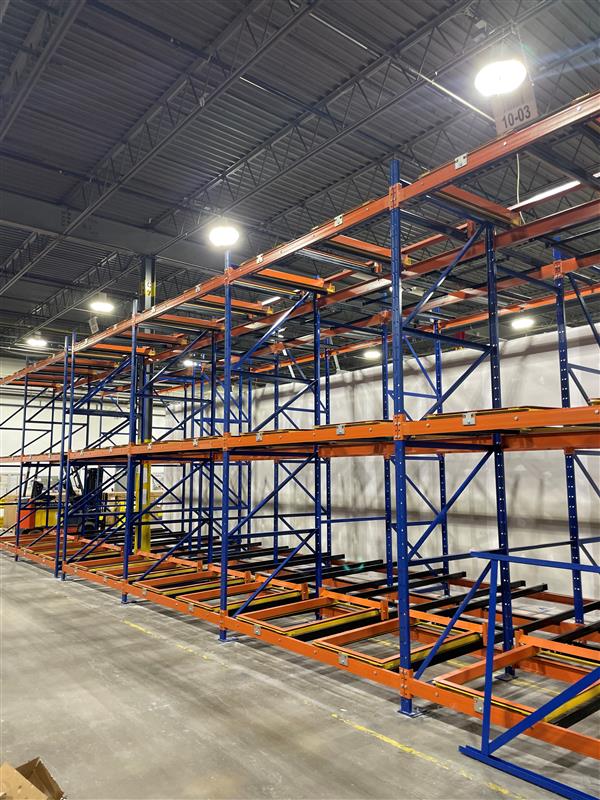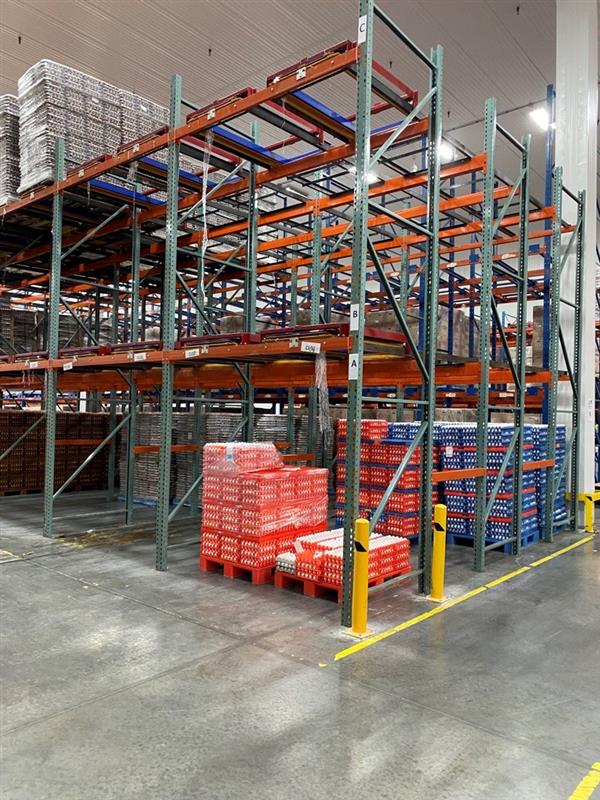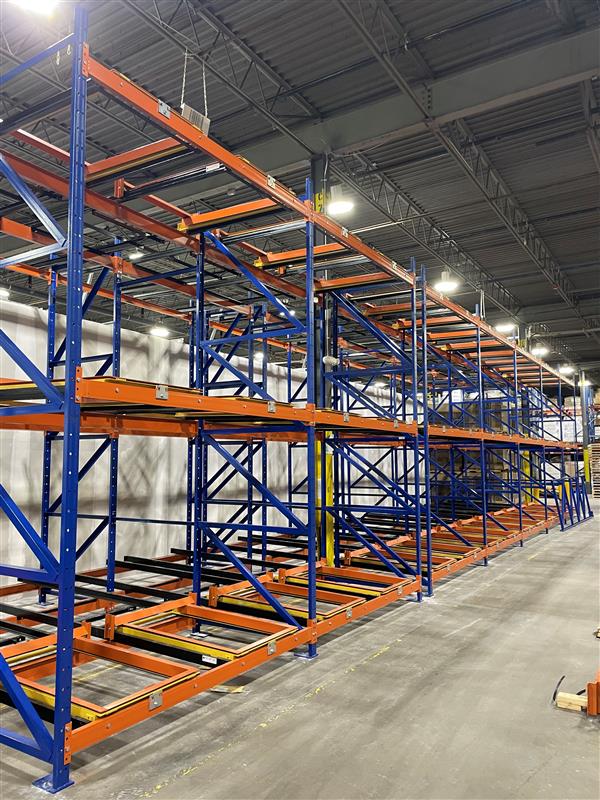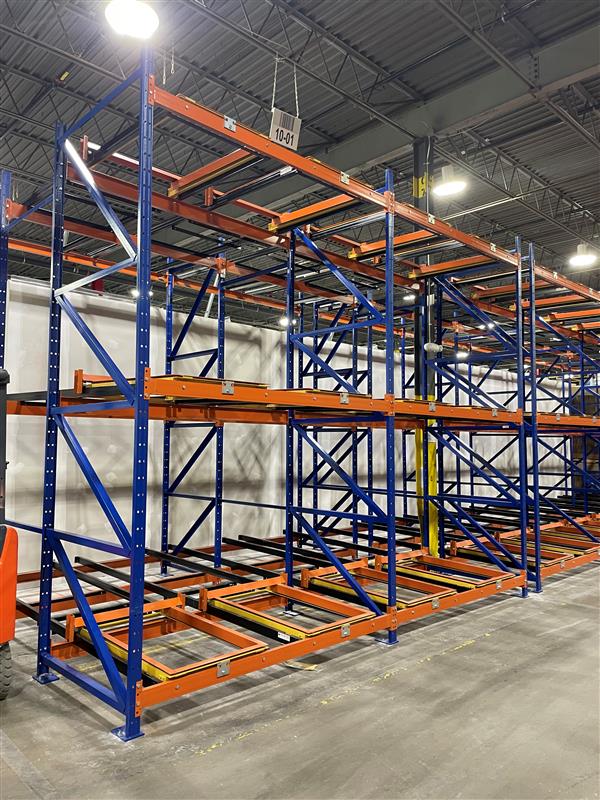

Pushback racking is an accumulative high density storage solution that lets up to six pallets deep to be stored on each level. The entire pallets of each level – apart from the one on top – are positioned on a set of wheeled carts that are pushed along rolling rails.
Pushback pallet racking is a LIFO (Last-In First-Out) framework, which is usually composed of an inclined rail section that extends the full depth of storage lane. Pallets are loaded in sequence onto trolleys of different heights and are pushed back along inclined steel guide channels to use the entire depth of the push-back pallet racking.

When the 1st pallet is loaded from the front, it sits on the 1st wheeled cart on the track. When the 2nd pallet is loaded, the 1st pallet “pushes back” behind it one position. The 2nd pallet is then either positioned on the rail in a two-deep system or positioned on the subsequent cart in a three to six deep system. The procedure keeps on going on until the lane is filled up to six pallets deep.
Carts make use of least vertical space within the bay since they nest jointly and flow forward. Even a 6-deep push-back rack cart stack uses just 6-1/4” vertical bay height. This low profile leaves plenty of vertical storage space for pallets. Special carts can be created for damaged or unstable pallets and pushback racking trolleys can be color coded uniquely so operators have full visibility of the number of pallets that are in the bay when it is loaded heavily.



Pushback pallet racking solutions are perfect for warehouses that have a high volume of turnover, have a confined number of pallets per SKU, and stock a high volume of products. But, they are not suitable for every type of warehouse. It is always recommended to discuss with a pallet rack expert to help understand a specific system that will work for your application.
Can I get FIFO with push-back pallet rack system?In contrast to popular belief, it is simple to get FIFO with push-back racking. The key is to shape the system so that each product (SKU) makes use of several lanes. If each product has 3 or 4 lanes of push-back, the operator just ships out the oldest lane first.
How Difficult is it to Load and Unload from Push-Back Racking?Experience has demonstrated that the majority of operators are fully competent within a few hours. Many operators state that push-back is convenient for loading and unloading in contrast to standard pallet rack. Instructions to operate are provided with each system.
Can I Customize Pushback Racking?Personalized pushback pallet rack solutions are available, making an already custom-designed system even more modified. Pushback solutions are designed to accommodate extraordinary pallets like extra-wide and extra-long pallets. Unique carts can also be made to support pallets that are not strong enough to support themselves. In such circumstances, carts are prepared with full mesh supports or cross supports to create more surface area for heavier skids.
What are the Benefits of Push-Back Racking?The capability of providing both storage density and selectivity (access to different SKUs/pallets) by storing several pallets per position is the biggest benefit of pushback pallet rack. Providing selectivity without compromising density has facilitated pushback rack to grow in popularity in recent years.
Will I Require Special Forklift Trucks?No, our pushback racking solutions can be installed with clamp, reach, swing reach, deep reach, and counterbalance forklift trucks. Pushback racking is getting enormously popular recently because of offering space savings like a drive-in system, with usually three to five times greater selectivity. This growth has been further encouraged by marketing trends like quick increases in the number of SKUs, mass communication, and more rapid product obsolescence.
If you are in search of a promising racking solution, make sure to get in touch with the pallet experts at First Access Inc. today.